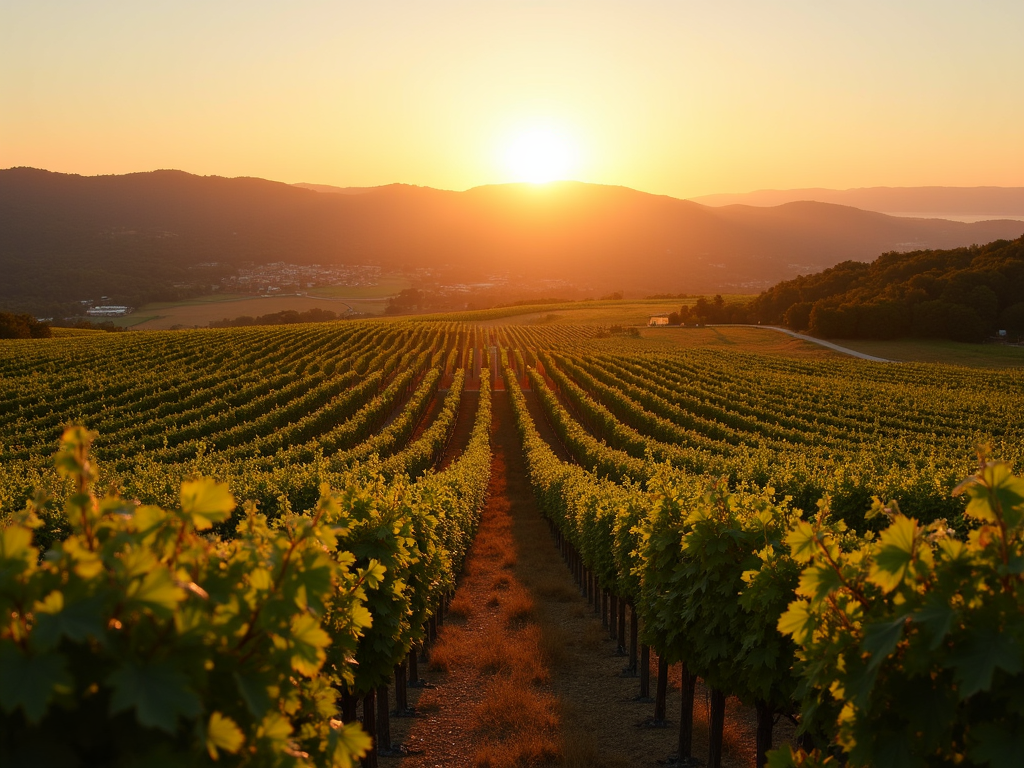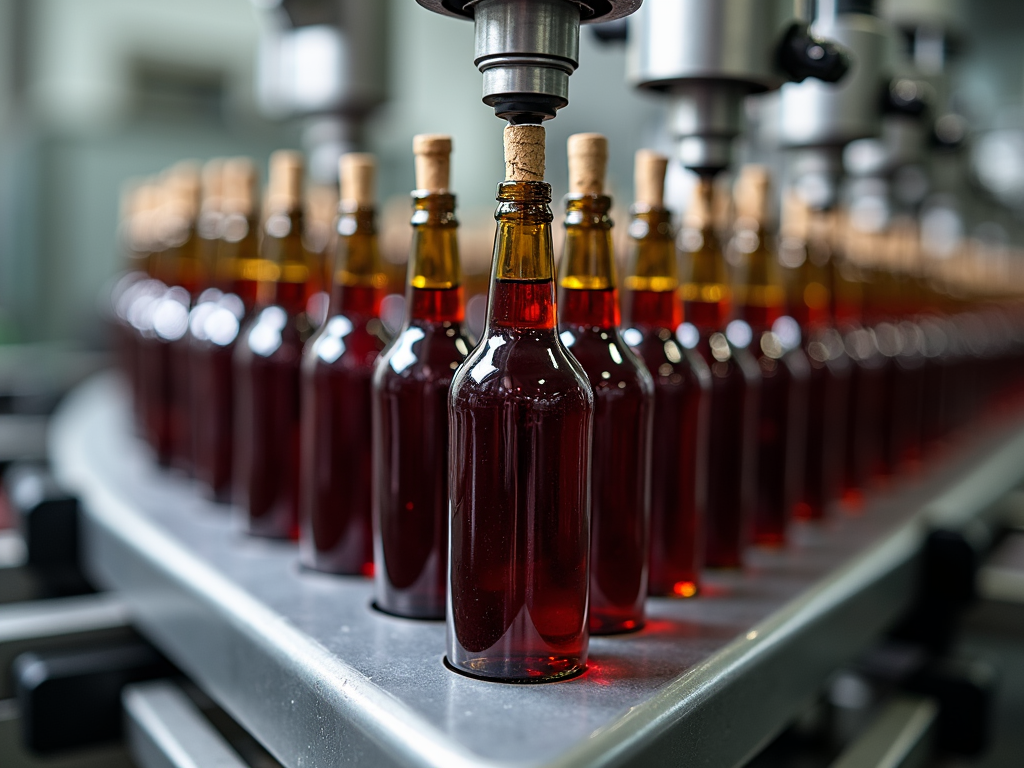Unveiling the Secrets of Beringer Wine Production
Overview: Explore the fascinating journey of Beringer wines, from vineyard to bottle, and uncover the secrets behind their exceptional quality.
When it comes to wine, few names carry as much weight as Beringer. This iconic brand has been producing world-class wines for over a century, earning a reputation for excellence that few can match. But what exactly goes into the Beringer wine production process? How do they transform simple grapes into the complex, flavorful wines that have captivated palates around the globe? In this article, we'll take you behind the scenes to explore the meticulous steps involved in creating Beringer's renowned wines. From the careful selection of grapes to the art of blending and aging, you'll discover what makes Beringer a true leader among wine brands.

The Journey Begins: Grape Selection and Harvesting
The foundation of any great wine is the quality of its grapes, and Beringer takes this to heart. Their vineyards, nestled in the heart of California's Napa Valley, are meticulously cared for to ensure that only the finest grapes make it into their wines. The process starts with selecting the right varietals for the region's unique terroir. Beringer's winemakers work closely with viticulturists to monitor the grapes' growth, ensuring they reach optimal ripeness.
Harvesting is a critical step in the Beringer wine production process. Timing is everything—pick too early, and the grapes may lack flavor; pick too late, and they could be overripe. Beringer employs a combination of modern technology and old-world intuition to determine the perfect moment for harvest. Once the decision is made, the grapes are carefully hand-picked to avoid damage and ensure only the best fruit is selected.

Crushing and Pressing: Extracting the Juice
After harvesting, the grapes are transported to the winery, where they undergo crushing and pressing. This step is crucial in the Beringer wine production process, as it extracts the juice that will eventually become wine. For red wines, the grapes are crushed to break the skins and release the juice, while for whites, the grapes are pressed to separate the juice from the skins.
Beringer uses state-of-the-art equipment to ensure that this process is as gentle as possible, preserving the delicate flavors and aromas of the grapes. The resulting juice, known as "must," is then ready for fermentation.
Fermentation: Transforming Juice into Wine
Fermentation is where the magic happens. During this stage, yeast is added to the must, converting the natural sugars into alcohol. Beringer's winemakers carefully control the temperature and duration of fermentation to achieve the desired flavor profile. For red wines, fermentation typically occurs with the grape skins to extract color and tannins, while white wines are fermented without the skins.
One of the things that sets Beringer apart from other wine brands is their use of both stainless steel tanks and oak barrels for fermentation. Stainless steel allows for precise temperature control, while oak imparts subtle flavors and complexities to the wine. This dual approach gives Beringer's wines a unique balance of freshness and depth.

Aging: Developing Complexity and Character
Once fermentation is complete, the wine is aged to develop its full potential. Aging is a critical part of the Beringer wine production process, and the winery is famous for its extensive aging cellars. Depending on the wine, aging can take place in stainless steel tanks, oak barrels, or a combination of both.
Oak aging, in particular, is a hallmark of Beringer's style. The winery uses a mix of French and American oak barrels, each imparting different characteristics to the wine. French oak tends to add subtle, spicy notes, while American oak contributes bolder flavors like vanilla and coconut. Beringer's winemakers carefully select the type of oak and the duration of aging to complement each wine's unique profile.

Blending: The Art of Balance
Blending is where the artistry of winemaking truly shines. Beringer's winemakers taste and evaluate each batch of wine, deciding which ones to blend together to create the final product. This process requires a keen palate and years of experience, as the goal is to achieve a harmonious balance of flavors, aromas, and textures.
Beringer is known for producing both single-varietal wines and blends, each showcasing the best of what the vineyard has to offer. Whether it's a bold Cabernet Sauvignon or a complex Chardonnay, every bottle reflects the winery's commitment to quality and consistency.
Bottling: The Final Step
After aging and blending, the wine is ready for bottling. Beringer uses advanced bottling lines to ensure that each bottle is filled, corked, and labeled with precision. Before sealing, the wine is often filtered to remove any sediment, ensuring clarity and stability.
Once bottled, the wine may undergo additional aging before being released to the market. This allows the flavors to meld and mature, resulting in a smoother, more refined drinking experience.

What Sets Beringer Apart?
While many wine brands follow similar production processes, Beringer distinguishes itself through its unwavering commitment to quality and innovation. Here are a few factors that make Beringer stand out:
- Sustainability: Beringer is dedicated to sustainable farming practices, ensuring that their vineyards remain healthy and productive for generations to come.
- Heritage: With a history dating back to 1876, Beringer has a deep understanding of winemaking traditions, which they blend seamlessly with modern techniques.
- Innovation: Beringer continually invests in research and development, exploring new ways to enhance the quality and sustainability of their wines.
These elements, combined with the expertise of their winemakers, make Beringer a leader in the wine industry.
Conclusion: A Toast to Excellence
The Beringer wine production process is a testament to the brand's dedication to excellence. From the careful selection of grapes to the meticulous aging and blending, every step is designed to create wines of unparalleled quality. Whether you're a seasoned wine connoisseur or a casual enthusiast, understanding the journey behind each bottle can deepen your appreciation for Beringer's exceptional wines. So, the next time you pour a glass of Beringer, take a moment to savor not just the flavor, but the craftsmanship and passion that went into creating it.